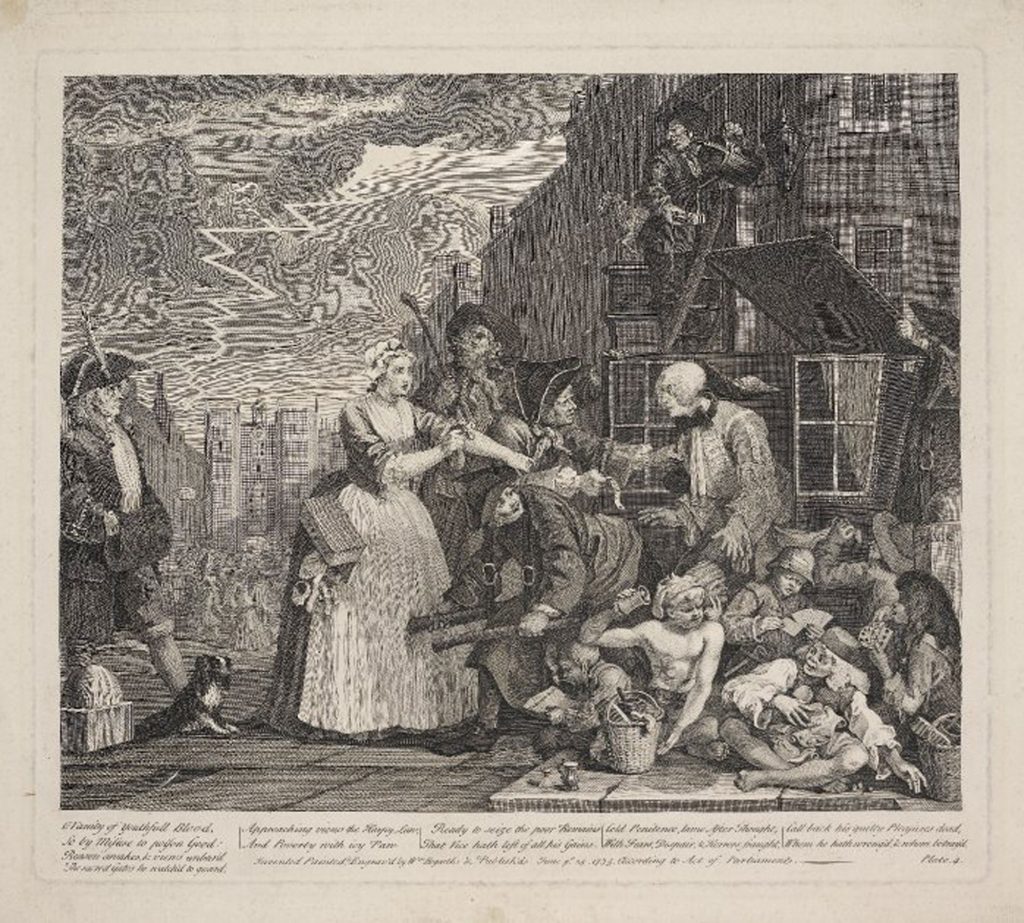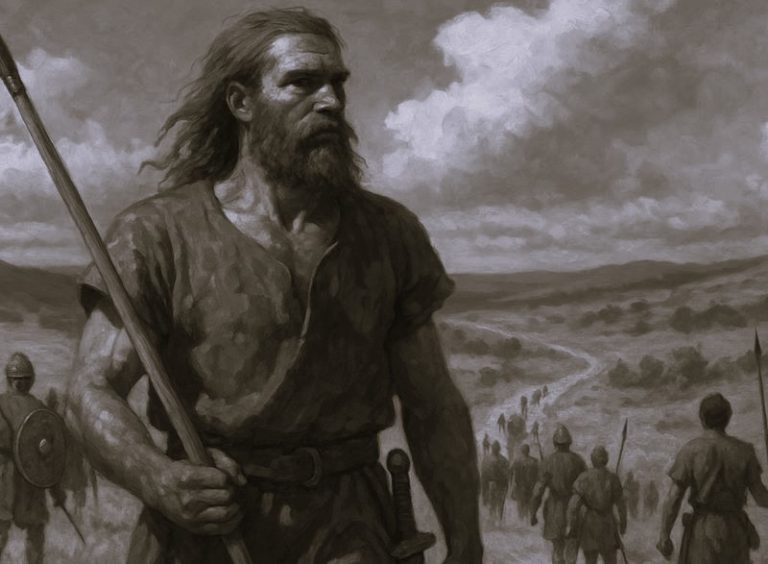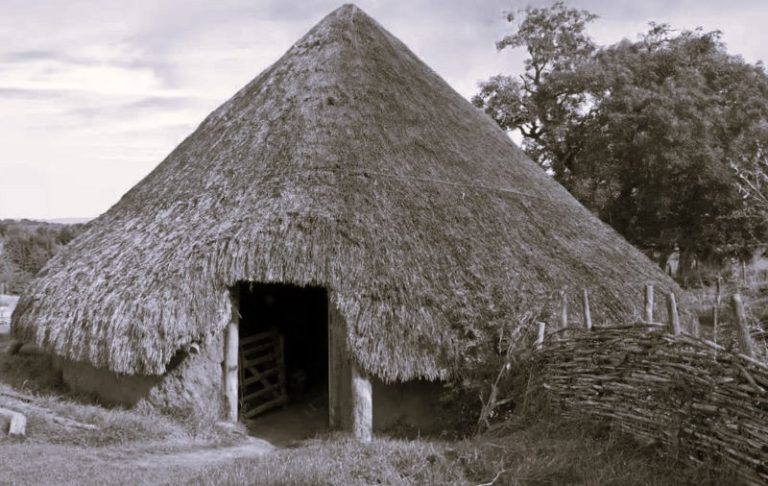

From the charitable relief of the Poor Law to the grim conditions of the workhouse, examining attitudes to the poor in Georgian Britain.
By Dr. Matthew White
Visiting Research Fellow
University of Hertfordshire
Introduction
Throughout this period, fluctuating grain prices at times of poor harvest resulted in many families struggling to pay for their basic item of food: bread. Perhaps one in 10 families remained below the ‘breadline’ over the period, increasing to nearly two out of every five families in times of food shortage. There were, of course, other reasons why people fell on hard times. Illnesses, accidents and old-age, for example, all prevented people from working. How did the poor cope with poverty during this period?
The Poor Law

Charitable ‘relief’ for the needy was administered by local parishes through the provisions of the Poor Law. To qualify for financial assistance the poor were required to prove their right to ‘settlement’ in a particular area. This might include being born, married or having served and completed an apprenticeship there. Paupers deemed not to have any settlement rights were often ‘passed’ on to their home parishes in order to avoid any unnecessary costs.
Relief of the poor was paid from rates levied against wealthier households. Charity was distributed to claimants through local overseers, who ‘examined’ settlement claims and assessed how much money individuals should receive. As well as apportioning financial hand-outs to people in their own homes (so-called ‘outdoor relief’), many parishes also awarded relief ‘in kind’: in clothing and fuel during winter months, for example, or in loaves of bread.
The Workhouse

Though the vast majority of people claiming relief in the 18th century were needy through no fault of their own, certain sections of society nevertheless believed that poverty was caused by the bad habits of the poor: their preference for drinking and gambling, for example, or through their own simple laziness. To reduce the rising cost of poor relief some people argued that the act of receiving charity itself should be made less attractive and hence less likely to be sought after.

Legislation passed in 1722 entitled parishes to provide poor relief in specially built workhouses. By the 1770s there were around 2,000 such workhouses in the country housing nearly 100,000 people. 90 separate workhouses operated in London alone, housing around 15,000 inmates. Poor people were lodged in single sex ‘wards’ where the able-bodied were set to menial tasks: spinning thread or sewing clothes, for example, and inmates were ordered to follow strict rules of behaviour and to conform to daily routines. Jeremy Bentham described how workhouses were essentially prison-like structures, designed principally ‘to grind rogues honest’.
But life in the workhouse varied enormously from parish to parish. Some workhouses were clean and comfortable havens for the poor. Many provided education, rudimentary health care and clean clothing. Others echoed to the sound of children playing, many of whom were placed in local businesses as apprentices, and most workhouses allowed visitors to come and go as they pleased. Other parishes – particularly in small rural communities – refused to build parish workhouses altogether owing to their substantial running costs. In many parishes ‘outdoor’ relief remained the chief means of assistance, administered to the poor on an individual basis.

Other workhouses, however, were dark and foreboding places. Many were hopelessly overcrowded. Some London workhouses accommodated well over 700 people. Inmates receiving relief were made to wear special uniforms or badges that signified their demeaning status. Many people contracted diseases and died within their walls, and were later buried in unmarked mass pauper graves. In the 1750s social investigator Jonas Hanway discovered that the death rate amongst workhouse children in London was over 90%. Thus the opening of a new workhouse in some areas was occasionally the cause of serious rioting, and many of the poor preferred to starve rather than enter their gloomy confines.
Charity
Poor people were not, however, wholly dependent on help from the parish. Many towns and cities supplemented official sources of relief with money collected through charitable donations, which played an important part in helping the needy. Funds were collected from social events that frequently took place up and down the country: balls, musical concerts or charitable art exhibitions, for example. Many people also bequeathed substantial sums of money to charity in their wills.
Several private charitable institutions sprang up in the 18th century that offered further forms of assistance. In London, the Foundling Hospital was established in 1739, which took care of dozens of illegitimate children whose mothers could no longer afford to support them. In the 1750s, the Marine Society was also founded in London, in order to train poor boys for a life at sea. Many towns and cities also built local infirmaries and dispensaries that offered free medical care to the poor.
Pauper Trades
With people reluctant to enter workhouses or plead for relief, many resorted instead to begging on the streets. Beggars were a familiar feature of most towns and cities in the 18th century, particularly around shops, markets and other busy places. But begging could be a very dangerous activity. Vagrancy remained illegal throughout the century and beggars were regularly whipped and imprisoned in ‘Houses of Correction’.
Like begging, prostitution was another highly visible alternative to pauperdom. Many vulnerable young girls were forced into prostitution through their failure to secure work, or were otherwise tricked into the occupation by the promise of respectable employment.

The appearance of prostitutes at evening time was a familiar part of life in 18th-century towns, and prostitutes catered to all tastes among the rich and poor alike. In London, scores of street walkers plied their trade up and down the Strand, and swarmed in the theatres and taverns of the capital. Dozens of infamous bawdy-houses could be found up narrow alleyways and down side streets, and even ships moored on the Thames were sometimes converted into brothels.

As an alternative, many people engaged in ‘beggarly trades’ that provided irregular but more ‘respectable’ incomes: as costermongers, shoe blacks, crossing sweepers, sellers of ballads and market porters, for example. These were tough and often objectionable jobs that carried with them a lowly status in society. Many of these jobs, however, played an important part in local economies, and offered the needy an independent and honest way of making a living.
Originally published by the British Library, 10.14.2009, under the terms of a Creative Commons Attribution 4.0 International license.






